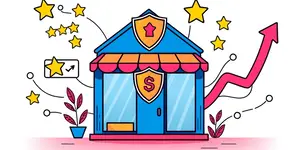In today’s digital landscape, personalization has become the cornerstone of exceptional customer experiences. Brands that invest in tailored interactions not only meet rising expectations but also unlock significant business value.
The Rising Bar: Consumer Expectations
Consumers no longer tolerate generic outreach. Recent research shows that 71–76% of consumers expect personalized offers and proactive assistance when interacting with brands. Moreover, 81% ignore irrelevant messages, making relevance the difference between engagement and disinterest.
Emotional connection drives loyalty. When customers feel recognized as individuals rather than statistics, frustration fades and trust grows. Yet only about 34% of brands deliver on these expectations, revealing a widening gap between consumer demand and brand capability.
Quantifying the Business Value
Personalization is not just a customer nicety; it is a powerful revenue engine. Companies that excel at personalization see 40% higher revenue compared to their peers. On average, personalization efforts drive a 10–15% lift in revenue, and in some sectors, gains can reach 25%.
Brands that lead in personalization are 48% more likely to surpass revenue targets and 71% more likely to report major customer loyalty gains. For example, Darn Tough achieved an 8% boost in online conversions by tailoring product recommendations. Telmore, a Danish telecom, recorded an 11% sales lift with AI-driven personalization.
Building the Data Foundation
At the heart of personalization lies unified customer data. Silos prevent brands from seeing the complete customer journey, leading to disjointed experiences. The key is to consolidate behavioral, transactional, and profile data into a single source of truth.
Customer Data Platforms (CDPs) play a critical role by ingesting data from websites, email campaigns, and point-of-sale systems. With real-time analytics and unified profiles, brands can segment audiences for micro-targeting and deliver tailored content at every touchpoint.
Technology Enablers: AI and Automation
Modern personalization depends on advanced technologies. AI and machine learning power dynamic recommendations, predictive triggers, and real-time decision engines.
- Predictive Recommendation Engines for product suggestions
- Dynamic Content Generation across email and web
- Automated Segmented Email Campaigns with 65% better open rates
- Real-Time Decisioning for context-aware interactions
These tools allow brands to deliver 1:1 predictive recommendations and hyper-personalized experiences at scale, moving beyond static segmentation to continuous, context-driven engagement.
Overcoming Organizational Challenges
Despite widespread adoption—97% of companies claim to personalize—only 34% deliver mature, real-time personalization. Common barriers include:
- Data Silos that block holistic views
- Lack of Real-Time Analytics impeding agility
- Disconnected Tech Stacks creating friction
- Privacy Concerns eroding consumer trust
Nearly 50% of consumers distrust brands handling their data, so transparent consent practices and clear value propositions are essential. Brands must balance relevance with respect for privacy to build long-term relationships.
Scaling Strategies and Case Studies
To scale personalization, organizations should follow a structured playbook:
- Optimize Data Collection and Integration
- Align Teams Around Personalized Objectives
- Integrate AI and Automation Toolsets
- Iterate Based on Performance Metrics
For example, Telmore’s team aligned marketing, sales, and IT around a unified personalization roadmap. By deploying AI-powered recommendation engines and measuring impacts on sales and churn, they achieved an 11% sales lift within months.
Personalization Across the Customer Lifecycle
Effective personalization extends beyond marketing into sales, service, and loyalty:
• In sales, dynamic product configs and tailored proposals shorten deal cycles.
• In support, 57% of consumers prefer personalized assistance through apps and chatbots, reducing resolution times.
• In loyalty programs, nearly 75% of consumers value tailored rewards and offers, boosting repeat purchases by 60%.
By embedding personalization at every stage, brands transform one-off transactions into lifelong relationships, driving sustainable growth.
The Future of Personalized Experiences
Looking ahead, personalization will evolve toward real-time, context-aware decisioning powered by emerging technologies. Key trends include:
• Shift from Broad Segmentation to Individual-Level Targeting
• Emergence of Commerce Data for seamless online and offline integration
• AI-Driven Hyper-Personalization responding to contextual signals
Brands that embrace these advances will create omnichannel journeys where every interaction feels uniquely crafted for each customer.
Conclusion
Personalization at scale is no longer optional—it is a business imperative. With consumer expectations soaring, brands that harness unified data, AI, and automation will unlock significant revenue gains, heightened loyalty, and operational efficiencies.
By following a clear strategic playbook, overcoming organizational barriers, and continuously innovating, companies can deliver truly individualized experiences across the customer lifecycle. The path to digital customer value lies in the relentless pursuit of relevance, recognition, and real-time engagement.
References
- https://business.adobe.com/blog/how-to/personalization-at-scale-has-never-been-more-crucial-for-your-business
- https://www.zendesk.com/blog/customer-service-statistics/
- https://onramp.us/blog/customer-experience-statistics
- https://adamconnell.me/personalization-statistics/
- https://www.cmswire.com/customer-experience/personalization-nation-how-cx-leaders-in-the-us-define-success/
- https://instapage.com/blog/personalization-statistics/
- https://www.mckinsey.com/capabilities/growth-marketing-and-sales/our-insights/the-value-of-getting-personalization-right-or-wrong-is-multiplying
- https://dotdigital.com/blog/personalization-in-digital-marketing/
- https://www.bloomreach.com/en/blog/a-marketers-guide-to-personalization-at-scale
- https://www.deloittedigital.com/nl/en/insights/perspective/marketing-trends-2025.html
- https://www.digitalsilk.com/digital-trends/personalization-statistics/
- https://marketingltb.com/blog/statistics/personalization-statistics/
- https://www.contentful.com/blog/personalization-statistics/
- https://www.mckinsey.com/capabilities/growth-marketing-and-sales/our-insights/unlocking-the-next-frontier-of-personalized-marketing
- https://www.deloittedigital.com/us/en/insights/research/customer-experience-personalization-strategy.html
- https://www.attentive.com/2025-consumer-trends-report
- https://www.pwc.com/us/en/technology/alliances/library/adobe-personalization-at-scale.html










